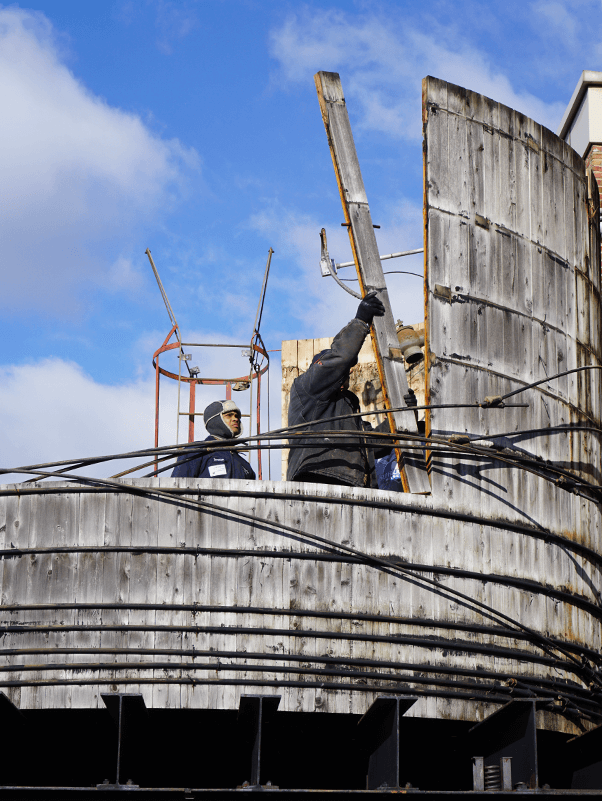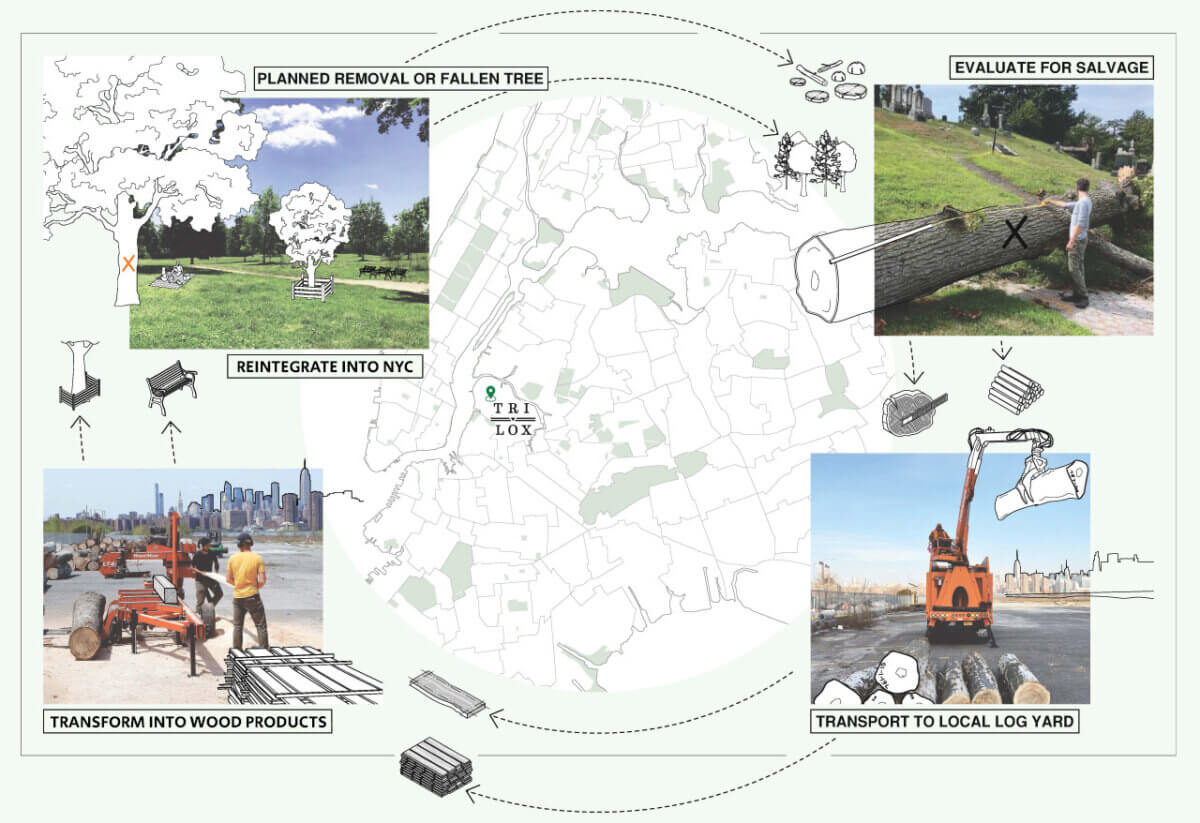
Necessity is the mother of invention. Case in point is Tri-Lox, a design, fabrication, and manufacturing company based in Brooklyn, N.Y. In its early days, co-founders Alexander Bender, Ellis Isenberg, and Tim Knight concentrated on making products from salvaged wood, particularly that from deconstructed water towers. But as they continued to research material streams, the trio saw a larger opportunity to develop new systems of wood reuse.
Now, more than ten years later, the company is pioneering wood reclamation and regenerative forestry practices throughout the Northeast. Working alone and with partners, Tri-Lox sources and processes wood for products and projects including Stickbulb’s Treeline series of lighting fixtures; dining tables for Danny Meyer’s Shake Shack; and seating for the forthcoming Bronx Music Hall, a 14,000-square-foot performing arts center designed by WXY.
We spoke with Tri-Lox’s Bender about material streams, the company’s partnership with NYC Parks, and ways manufacturers can source wood while prioritizing reuse and forest health. Excerpts from our talk follow.
What are the main pathways Tri-Lox uses to obtain wood?
We have three. They are 1) regional forest-sourced wood from rural areas, which comes from newly cut standing trees; 2) wood from regional deconstruction, which includes a diversity of building typologies such as water towers and industrial structures; and 3) urban wood diverted from the waste stream through salvage and reuse.
What are the types of wood you use?
Our four core collections—Skyline, Countryside, Watershed, and Industry—represent various material pathways across reclamation and forest-sourced wood. We’re also developing a pathway for salvaging and reusing New York City trees.
Do you also source virgin material?
Yes. Our expansion into forest-sourced wood began as field research in collaboration with Yale School of the Environment. Working directly with foresters and forestry students, we learned both sustainable forest management planning and how to generate timber through removals that support biodiversity, habitat, and watershed health.

A graph documenting TRi-Lox's NYC salvage and reuse efforts.
How did you begin working with NYC Parks?
The leadership of NYC Parks had been interested in developing a wood reuse system and was seeking a partner to begin research and development. So, we began a pilot project with them, the primary managers of the City’s public tree canopy, and Green-Wood cemetery, one of the largest privately owned green spaces in New York City. Both of these partners have managed the urban forest through moments of incredible canopy loss, such as Hurricane Sandy in 2012 and Hurricane Isaias in 2020. They both also are focused on shifting towards reuse and circularity.
In addition, we became a founding member of the Forest For All NYC coalition. There, we work with more than 130 organizations and government agencies to develop, advocate for, and execute an agenda that equitably supports and expands New York City’s forest.
Aside from reducing waste and sequestering carbon, are there specific advantages to using reclaimed wood?
Yes. It gives you access to old-growth timber and species that wouldn’t otherwise be available. For example, American Chestnut trees were wiped out by a blight during the 20th century. It’s now only available as a reclaimed material.
What would you suggest to other companies or designers interested in using wood that prioritizes forest health?
I’d recommend starting with three questions. First, “What wood is this?” That includes its provenance (legal or illegal), conservation status (plentiful or endangered) and source (reclaimed or fresh-cut).
Second, “Where does this wood come from?” In the case of forest-sourced wood, it is finding out if the forest is sustainably managed. And if it is reclaimed, learning whether it will contribute to a local circular economy.
Finally, “What happened to this wood after it left the forest?” To answer this, look at whether its removal aided forest conservation and if its manufacturing and production contributed to local green jobs.





